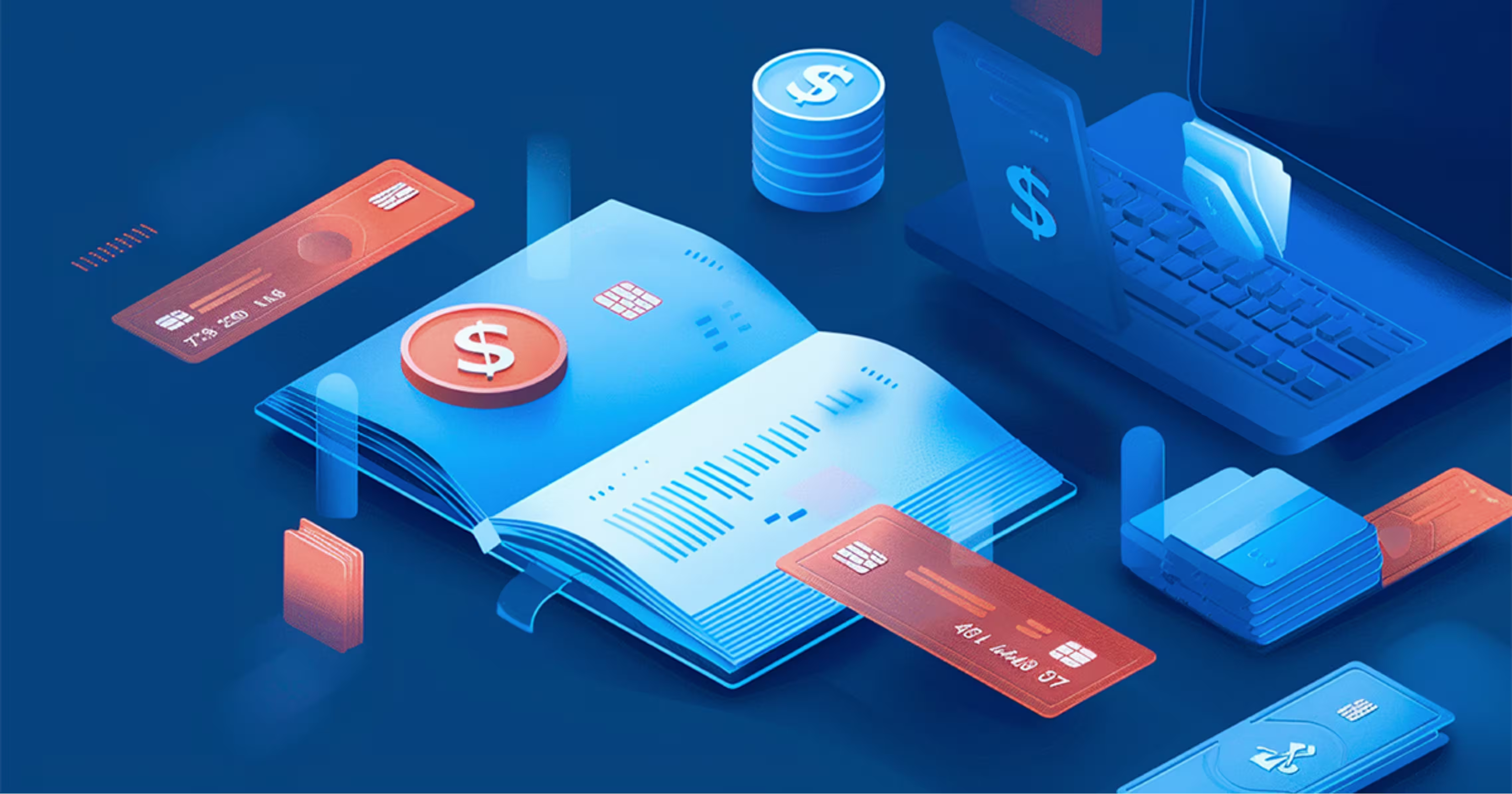Where Do Traditional Subscription Billing Solutions Fall Short?

Consider a scenario where a salesperson, an engineer, and a billing professional collaborate in a company's billing process. When the billing professional begins crafting the invoice for monthly billing contracts, they consult the salesperson for the contract details with the customer. Depending on the contract specifics, they request that the engineer provide corresponding usage information.
Here lies a common flaw in traditional subscription billing tools. Instead of directly obtaining usage data, the expectation is for the engineer to prompt the salesperson to add usage information alongside the saved contract. This process requires the engineer to understand the contracts, perform usage calculations, and synchronize this data with the contract.
In essence, traditional billing tools place the onus on the engineer to bridge the gap between contracts and usage, transferring data engineering responsibilities to in-house teams. While this may streamline the billing professional's role, it significantly increases the workload for the engineer within the client company, highlighting a key drawback of traditional subscription billing systems.
With the subscription and billing management market poised for substantial growth in the coming years and projected to reach $11.15 billion by 2028 — it becomes imperative to address and overcome the shortcomings of traditional billing tools.

Let’s take a closer look at the problem
Traditional subscription tools were designed primarily to automate invoicing for contracts set at fixed intervals — monthly, quarterly, or annually. However, they often fell short of meeting the evolving needs of businesses. These tools typically restricted users to adding only one subscription at a time or offered limited options with basic plans. Consequently, businesses encountered challenges in managing varied invoicing requirements efficiently.
One substantial issue that remains prevalent in numerous traditional subscription tools is that they lack the capability to integrate nuanced contracts into their billing structures. This limitation hampers the ability of companies to automate invoice generation for contracts that extend beyond basic subscriptions. The challenge stems from billing systems lacking the flexibility needed to handle nuanced contract details and adapt to unforeseen scenarios.
Moreover, when it comes to usage-based pricing, engineers need to understand the billing system in a fair amount of detail to be able to send usage data to the billing system.
To sum it up, traditional subscription solutions face two critical challenges: the hurdles posed by new contract structures and their incapacity to navigate usage-based pricing needs.
Contract restrictions
Let’s break this down into two critical parts and further understand them with examples for each problem.
Restricted pricing models
Challenge: Traditional billing systems are often limited in the variety of pricing models they support, primarily catering to standard subscription models, thus restricting flexibility. With over 50% of Software as a Service (SaaS) companies updating pricing in 2023 — this requires billing systems to adapt and offer a wider range of pricing models to meet evolving market demands.

Example: Consider a SaaS platform that offers various pricing tiers based on usage levels, with discounts for higher usage volumes. Traditional billing tools may struggle to adapt to such nuanced pricing structures, limiting the platform's ability to cater to diverse customer needs effectively.
In such scenarios, businesses are constrained by the rigid pricing options offered by traditional billing systems. They may find it challenging to implement innovative pricing strategies or respond promptly to changes in market demands. As a result, they may miss out on opportunities to maximize revenue and enhance customer satisfaction.
To overcome these limitations, businesses need modern billing solutions that offer greater flexibility in defining and implementing pricing models. These solutions should empower businesses to experiment with different pricing strategies, tailor pricing plans to individual customer needs, and adapt quickly to evolving market dynamics. By embracing flexible billing solutions, businesses can unlock new revenue streams and stay ahead in today's competitive landscape.
Linear billing architecture
Traditional billing systems face significant challenges due to their linear architecture, often resulting in inefficiencies and limitations in contract management and billing processes.
Challenge: Traditional billing systems are structured as lists of products and their associated prices. While this approach may seem straightforward, it fails to accommodate the complexities of modern contract structures and pricing models effectively.
Sales contracts are often written in simple language, overlooking the need for detailed product lists and corresponding prices. This oversight leads to difficulties in accurately representing contract terms within the billing system.
Examples:
Let’s say Company X implemented a tiered pricing model where products were priced in credits and sold in dollars. However, traditional billing systems struggle to compute such deals accurately, leading to manual workarounds and an increased administrative burden.
In another instance, Company Y offers discounts on one product based on the usage of another product. For instance, a 10% discount on emails is applied when a customer sends 1000 SMSes. Such non-linear pricing models pose challenges for traditional billing systems.
The linear architecture of traditional billing systems limits their ability to effectively accommodate diverse contract structures and pricing models. To address these challenges, businesses need modern billing solutions capable of handling complex contract terms and dynamic pricing models with ease. By embracing flexible billing systems, businesses can streamline their billing processes and adapt quickly to changing market dynamics, thereby enhancing operational efficiency and customer satisfaction.
Nuanced subscription challenges
In the subscription-based business landscape, companies face nuanced challenges that traditional billing systems struggle to handle effectively.
These challenges arise from the complex nature of subscription contracts and diverse billing requirements.
Challenges
- Varied subscription elements
Subscription contracts often involve complex elements such as upfront charges, billing in arrears, and multiple billing cycles. Managing these diverse components demands advanced billing capabilities to ensure accurate invoicing and customer satisfaction.
- Product configuration limitations
Traditional subscription tools often limit businesses to associating only one product with each subscription. This constraint hinders the creation of bundled services or tiered pricing structures, hampering flexibility and revenue potential.
- Limited invoice control
Businesses often struggle with controlling invoice generation timing, sometimes needing to generate invoices ahead of schedule or delaying them to align with customer preferences or internal processes. Additionally, there are instances where invoices must be generated earlier to accommodate delays in receiving usage data from upstream systems. However, traditional billing systems often lack the flexibility to support such functionalities.
Addressing challenges
To navigate these complexities, businesses require modern billing solutions offering:
- Flexible billing rules
Configurable billing rules enable businesses to set up complex subscription structures, including various charges, billing cycles, and product bundles.
- Multi-product subscription support
Systems that allow the association of multiple products or services with each subscription facilitate diverse pricing models and bundled offerings.

- Enhanced invoice management
Granular control over invoice generation processes empowers businesses to customize invoice timing and manage billing workflows efficiently.
By embracing modern billing solutions tailored to address nuanced subscription challenges, businesses can streamline operations, improve customer experiences, and drive revenue growth.
Additional challenges
In subscription-based businesses, there are other challenges that often emerge from the interplay between sales and finance teams — along with limitations imposed by billing tools.
One other challenge arises when salespeople have the freedom to create contracts independently, leaving finance teams to manage the complexities of the contracts signed. This autonomy can lead to inconsistencies in contract terms and billing structures, impacting operational efficiency. In the second case, finance teams may set restrictions based on billing tool capabilities, limiting sales teams' ability to negotiate contracts freely.
These constraints hinder the exploration of innovative pricing strategies and revenue opportunities. Enhanced collaboration and flexible contract management processes are essential to address these challenges. Businesses must establish streamlined processes and centralized systems to ensure consistency and accuracy in contract terms and billing arrangements. Moreover, investing in modern billing solutions with robust capabilities can empower sales teams while adhering to billing policies and compliance standards.
Usage-based pricing
Over 38% of usage-based public companies are said to have higher forecasted YoY revenue growth. We discuss this in detail here.

Next, we'll delve into the limitations of traditional billing solutions concerning usage-based pricing.
Retrofitting usage into existing systems
The challenge of retrofitting usage-based pricing into existing billing systems is pervasive, particularly as these systems were predominantly designed for subscription-based models. For instance, Stripe's approach to usage-based pricing relies on API transmission for usage data.
However, this method places a significant burden on engineering teams due to several complexities, such as:
Tracking subscriptions and object IDs
Engineering teams must meticulously track subscription item IDs for each customer's plan, considering that a customer may have multiple subscription plans. Additionally, they need to monitor object IDs and unique identifiers for products linked to usage. Any changes in subscription IDs may necessitate code adjustments, adding complexity to system maintenance and updates.
Aggregating usage data
Usage data aggregation poses another challenge, particularly when dealing with complex calculations on top of basic usage metrics. While Stripe sums total usage relevant for a billing period, handling functions like Max, Min, best of two, or combinations of two or more sets of usage data requires additional engineering effort on the customer's end, adding layers of complexity to usage tracking and analysis.
Adapting to pricing changes and product updates
The coupling of usage and pricing amplifies challenges when pricing structures or product bundles are modified. Updates to API-related details for usage data transmission become necessary to align with new pricing metrics. This coupling results in friction when experimenting with usage data and pricing meters, impeding the agility of businesses to adapt to evolving market demands efficiently.

The tight coupling of usage and pricing in existing billing systems highlights the need for more flexible and adaptable solutions. Businesses must address these challenges by investing in billing platforms that can smoothly integrate usage-based pricing models, mitigate engineering complexities, and foster innovation in pricing strategies. By embracing modern billing systems, companies can optimize usage tracking, enhance pricing flexibility, and drive business growth in dynamic market environments.
Offloading data engineering work
The challenge of offloading data engineering work from traditional billing systems places a significant burden on client company engineers. These engineers are tasked with understanding complex contracts and calculating usage data for billing purposes, leading to several consequential issues, such as:
- Understanding complex contracts
Client company engineers must possess a deep understanding of the complex details embedded within contracts. This includes deciphering nuanced pricing models, tiered structures, and any discounts or incentives offered to customers. Without a comprehensive understanding of contract terms, engineers may struggle to accurately interpret usage requirements and calculate billing.
- Calculating usage for billing
Once engineers have deciphered contract terms, they must then move on to the challenging task of calculating usage data. This involves tracking various metrics such as usage volumes, frequencies, and any associated charges or rates. Additionally, engineers may need to aggregate usage data across different products or services, complicating the billing process further.
- Navigating complex data structures
Traditional billing systems often lack the flexibility to handle complex data structures efficiently. Engineers may need to navigate through convoluted data sets, manipulate data formats, and integrate disparate sources to extract relevant usage information. This complexity adds layers of technical intricacy to the billing process, increasing the likelihood of errors and inefficiencies.
- Maintaining data integrity and accuracy
Ensuring data integrity and accuracy throughout the billing process is paramount. However, with the manual handling of data engineering tasks, there is an inherent risk of discrepancies, inaccuracies, and data corruption. Engineers must implement rigorous validation processes and error-checking mechanisms to mitigate these risks effectively.
- Time and resource constraints
The additional workload imposed on engineers due to data engineering tasks can strain resources and impede productivity. Engineers may find themselves grappling with tight deadlines, competing priorities, and insufficient resources, adding to their stress and reducing efficiency.
Ready to break free from the drawbacks of traditional billing tools?
Traditional billing solutions often struggle to keep pace with the evolving demands of modern organizations. From bespoke pricing plans to complex internal billing workflows, businesses require a flexible and adaptable billing system to meet their unique needs.
This is where Zenskar comes into the picture — a revolutionary recurring subscription billing solution built from the ground up to integrate into your existing billing workflows and processes. With Zenskar, you can empower your sales teams to confidently pursue deals without worrying about cumbersome integration with your billing system. You can create custom attributes and define your own billing logic to exercise full control of your metering system. Zenskar's adaptable infrastructure effortlessly handles high throughput, accelerating your business growth like never before.
Unlock the full potential of modern billing capabilities with Zenskar — book a demo today for a firsthand experience of streamlined and powerful billing solutions.
Switch to zero-touch FinOps with Zenskar
Vertice closed books 70% faster with Zenskar
We launched our product 4 months faster by switching to Zenskar instead of building an in-house billing and RevRec system.

























